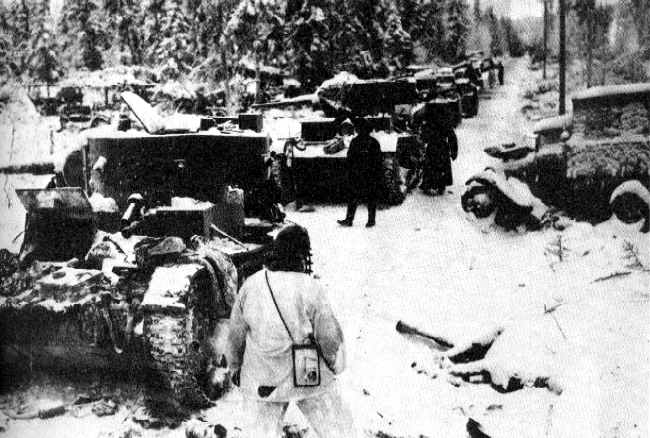

|
The November wind sweeping the Karelian Isthmus above Leningrad was cold and no happy omen to the thousands of Russian troops massing at the Finnish border in their summer uniforms. Still, 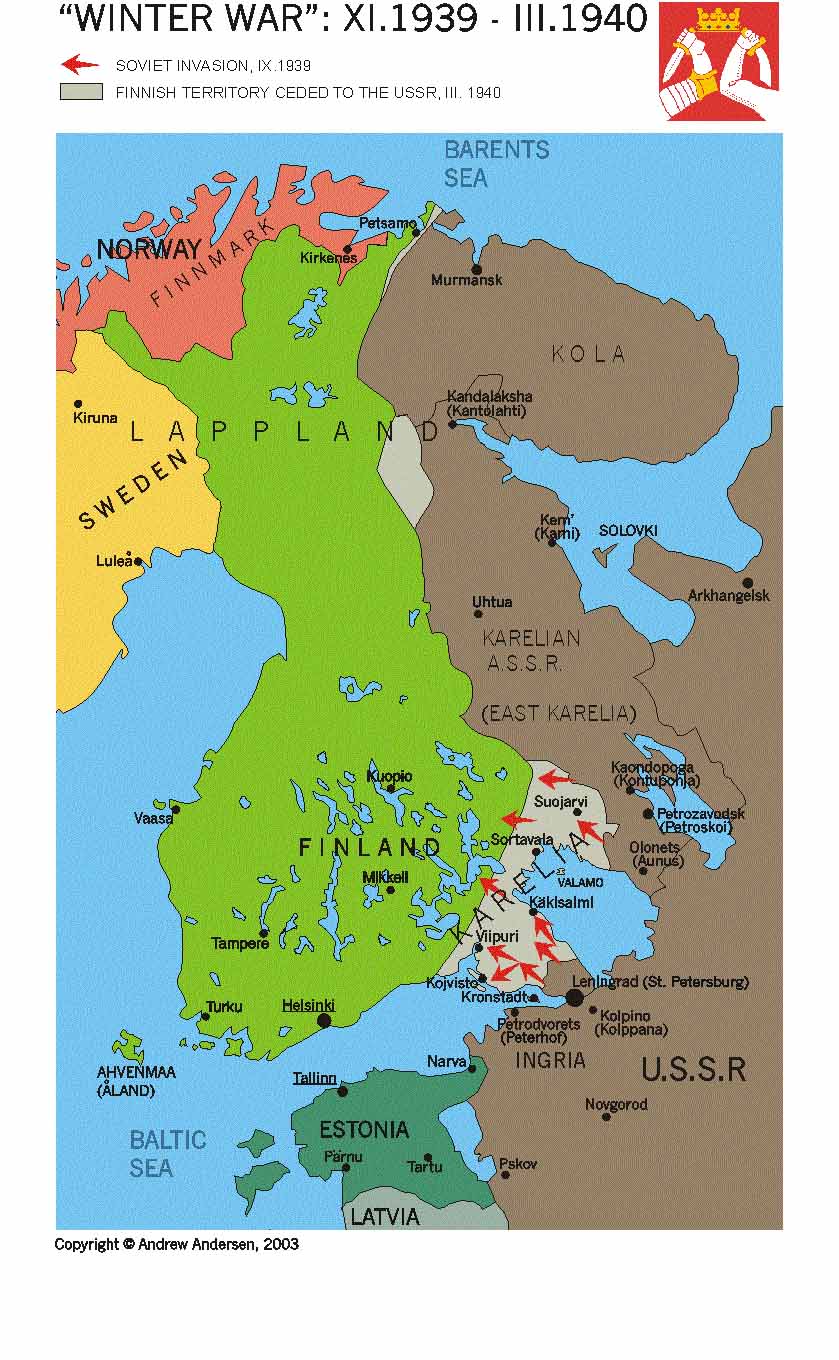 General Kirill Meretskov, 42 year old commander of four Russian armies poised for invasion, would not be issued winter clothing for his troops, since the campaign would last only a few days. General Kirill Meretskov, 42 year old commander of four Russian armies poised for invasion, would not be issued winter clothing for his troops, since the campaign would last only a few days.
It was late in 1939, and at the Kremlin in Moscow Stalin and his henchmen expected little trouble from neighboring Finland, a miniscule David to the Soviet Goliath. “All we had to do was raise our voices a little bit and the Finns would obey, “wrote Nikita Krushchev many years later. “If that didn’t work, we could fire one shot and the Finns would put up their hands and surrender. Or so we thought. With an 800 mile frontier separating the two countries northward, far into the Arctic Circle, however, there was more to the Soviet invasion plan. Meretskov’s 8th Army would sap Finnish defense of the isthmus by attacking along the shores of Lake Ladoga, on the eastern side of the isthmus but still in the region known as Karelia. Another major force, the 9th Army, would cross the Finn border at the small country’s narrow midwaist and strike for Oulu on Finland’s west coast fronting the Gulf of Bothnia. The 9th would cinch a tight belt cutting Finland in half. Then too, in the storied Lapland far to the north, the 14th Red Army would drive for Petsamo, the ice free port on an inlet of the Barents Sea in Arctic Finland that could, in the wrong hands, threaten the nearby Russian port of Murmansk. From Kronstadt, the Russian sea fortification on the Gulf of Finland, came the muted additional roar of its great fortress guns. In 30 seconds, the horizon became a sheet of flames; the entire frontier seemed ablaze. Snow laden trees flew through the air; boulders, dirt, slush and pieces of farmhouses were silhouetted against the blue red sky of dawn. Then began the rattle of Russian machine guns, answered by those of the Finns, competing refrains of the Finns’ rapid fire Lahti-Saloranta automatic rifle or the Russians’ slower firing light machine guns. The Russian artillery barrage continued for 30 minutes, to be followed by the sight of green rockets fired into the air as signal for the Red infantry to attack, they surged forward shouting their battle cry “Urra!” Many first had to plunge into the icy waters of the Rajajoki River at the border itself, where they immediately began assembling pontoon bridges. At 9:15, sections of the first battalion had crossed the new bridges and the frontier to enter Finnish Karelia. Farther north, the forests so silent an hour before the attack now were assailed by the cough of tanks touxiang, the clank of their threads and the sound of their sirens along the snow covered roads. Here, too, fields and woods shook with exploding bomb and shell, as the Finns found themselves under attack at virtually every road leading to the 800 mile border between the two countries. Even at the tiny village of Myllyjarvi, north of Lake Ladoga in the Karelia region, a narrow path became conduit for a strong Russian unit rushing forward under cover of artillery.Up and down the combat zone, Soviet aircraft roared low over the treetops to strafe and drop bombs. Although the Finns had gone through a civil war in 1918 (their German aided White Guard overcoming a Russian aided Red Guard), there was no nightmare in their collective experience to compare with the Soviet assault this day in 1939. Surely the small light that was an independent Finland was about to be extinguished. On the Karelain Isthmus, a more or less “normal” situation prevailed as the Soviet 7th Army advanced upon the stationary Mannerheim line of small fortifications and machine gun emplacements. To the north, however, the Russians faced a mobile army on skis, “invisible” in snow white parkas and perfectly suited for hit and run tactics against the unwieldy Russian columns. The Finns were experts at navigation and quite at home in temperatures of 50 degrees below zero. Nearly all were Home Guards and reservists. They were fine physical specimens. They knew they were defending their homes and farms and their fighting was fierce, determined, almost fanatic. They Most of these northerners had their own homemade cross country skis with leather toe bindings. Their handmade pieksu boots with turned up toes fitted neatly into the toe bindings so they could be in and out of their skis in seconds. When they crawled along the snow, shooting they had their skis beside them, attached to a leather belt. Using their quick firing Suomi submachine guns, the skiers appeared out of nowhere, poured a deluge of fire into the massed Russians, and then disappeared into the whiteness again. At Petsamo in Arctic Finland, the Soviet 104th and 52nd Divisions, supported by the coastal artillery guns of their own Arctic Ocean ports, began garnering a harvest of towns, villages and industrial property. Their plan was to push through to Rovaniemi, capital of Lapland, by December 12, and they expected little opposition from the local forces. The odds were 42 Russians against each defending Finn. Suomussalmi, meanwhile, was at Finland’s waistline and offered the shortest distance to Oulu on the western coast. Here the Murmansk railroad could carry supplies to the invading Red Army. Moreover, the road system on the Finnish side was good. As the Soviet troops stormed over the border, they brought their own heavy road building equipment, along with trucks, tanks, artillery, horses, filed kitchens, propaganda leaflets, gifts, brass bands, and the troops of the 163rd Division, some 17,000 strong. Elsewhere on the northern frontier, the Russian 139th Division rumbled along all available roads leading to Tolvajarvi, a ten mile frozen lake boasting a small village, church and co-op store. If the Soviet tanks, artillery and masses of men on the ground had been wantonly rammed into Finland’s icy forests, often to face wholesale slaughter, so had the crews of 3,000 Russian bombers and fighter planes been dispatched to their own kind of hell. The Finnish antiaircraft fire was alarmingly accurate, but far worse were Finland’s fighter planes. Entire squadrons of Tupolev SB-2 or Ilyushin DB-3 bombers disappeared while on missions over Finland. By the final count of the 105 day Winter War, the Finnish Fokker D-XXI fighters alone shot down 120 Russian bombers, while losing 12 of their own planes and only eight men. In all, fighter pilots on the side of Finland could claim 240 Russian aircraft as confirmed kills. The total known Russian aircraft loss, including those brought down by antiaircraft fire, was 684 and perhaps as many as 1,000. The total Finnish losses were 62. The Grim Reality In early December, it was starting to become clear to the Russian invaders that they would not be conquering little Finland by their original schedule of just a few days. Their vast armies were stymied and bogged down on just about every major front. They had failed thus far to storm the Mannerheim line. North of the Karelian Isthmus, stalled Russian columns, stretching sometimes for 18 to 20 miles in all, soon were cut off from resupply and were being chopped into small pieces by the Finns. Aside from poor leadership and training, the Russians suffered now from a variety of strategic errors. They failed to coordinate their massive artillery with their incursions by ground forces. In the frozen northland, they committed their superior forces to the few roads available and thus exposed the strung out columns to constant harassment by small but punishing Finn units. Finally, the Russians simply were not prepared for an extended Winter War. Outfitted in their lightweight uniforms, thousands of Red Army soldiers froze to death in the Northland. Others fell prey to illnesses such as pneumonia, while to be wounded in such isolation and severe climate was a death sentence in itself. If the Russians gathered around camp fires they were often picked off by Finn sharpshooters. In the battle of Lapland, the Russian 104th and 52nd Divisions fell 250 miles short of reaching the capital city of Rovaniemi, while in the Salla-Savukoski area, 40 miles into Finland territory, the Russian 88th and 122nd Divisions also were halted far short of the planned link up at Rovaniemi. At Tolvajarvi, the 10 mile frozen lake, the Finns at first were scattered in confusion by the powerful thrust of two Russian divisions, the 139th and the 75th, with total manpower of 45,000 ( plus 90 tanks, 50 armored vehicles and 335 artillery pieces ). Reeling, but lightly reinforced, the Finns rounded up their scattered men and in desperation jabbed back with light punches of their own. A company and a half struck an enemy campsite the night of December 8 and left the Russians so confused that two of their battalions fought each other for two hours. It was at Suomussalmi, that the Finns employed their chopping tactics with perhaps greatest effectiveness. Here the enemy consisted of the 163rd Division, composed mostly of tough but poorly trained Mongols, and the proud 44th Division of Ukrainian troops from the Moscow Military District. The two divisions combined would total 48,000 men. Soumussalmi was a great victory for the Finns. But the Winter War was not yet over. As the new year of 1940 began, the situation in Finland for the Russians was certainly bleak, but not yet to the point of unsalvageable. Stalin, of course was furious. As he rearranged the leadership of his army, conferences were held and new plans made. Semyon Timoshenko would command a new offensive on the all important Karelian Isthmus. On February 1, 1940 the new offensive began with some 600,000 fresh Soviet personnel. The Russians poured massive amounts of artillery fire down on the Finns. The Finns now exhausted from the toll the war had thus far taken on their small army put up an incredible, fanatical defense. Thrown at them in the 100 square mile area of Kollaa, north of Ladoga alone, was no less then 12 Russian Divisions with 160,000 troops. For Finland, the uneven conflict was winding down to its inevitable end. On March 13, 1940 men wept at the appalling peace terms just concluded. For the Finns there were 25,000 dead and 55,000 wounded. For the Russians, it was not until 1970 when Nikita Khrushchev published his memoirs that the world learned a million Russian lives had been lost in the Finnish campaign. |

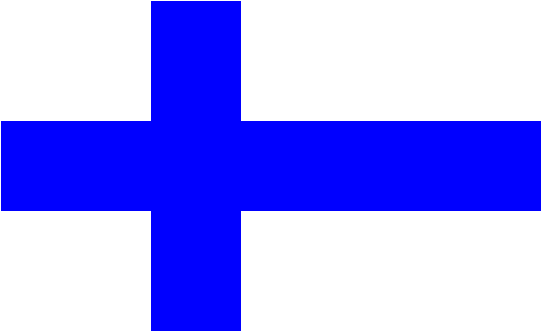
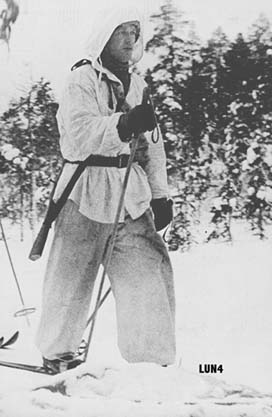

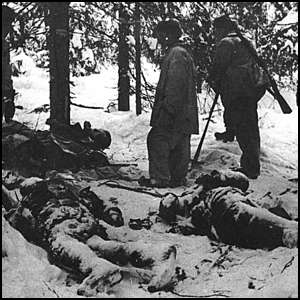 . The 20,000 Reds brought with them 147 artillery pieces and 45 tanks to use against 42,000 home grown Finns.
. The 20,000 Reds brought with them 147 artillery pieces and 45 tanks to use against 42,000 home grown Finns.
